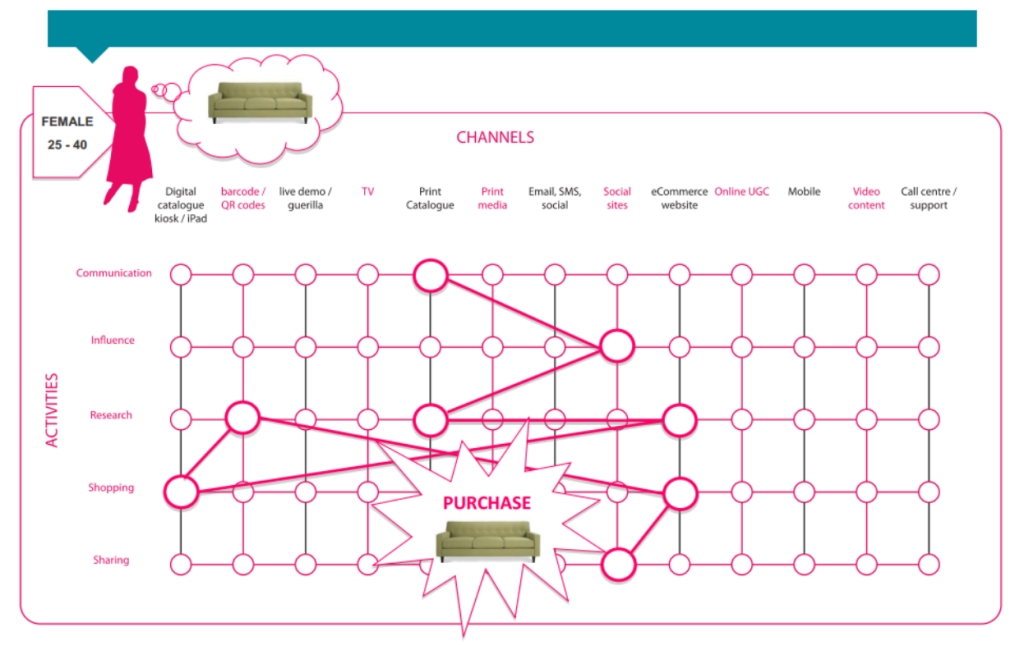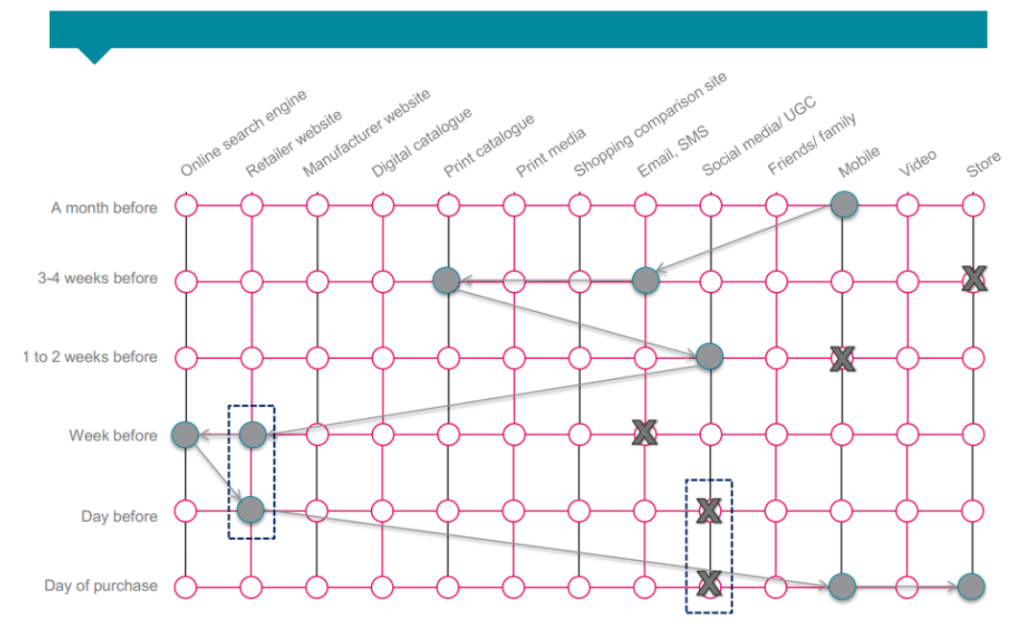Last month I wrote that in order to improve your site’s conversion rate you need to avoid the illusion that there’s just one type of prospect visiting your website, and they are looking to fulfill just one set of needs. This illusion has many website owners create only one advertising message that pushes people to one landing page.
In reality, multiple groups want to solve a range of problems. Your best opportunity to serve them is via a range of marketing messages leading to a range of targeted landing pages.
This month I’m going to take a crack at another illusion of simplicity: the journey the customer takes to reach your front door.
Let’s say a hypothetical someone wants to buy a sofa for their living room. They start their hypothetical journey by walking into a furniture store near their home. They then meander about, sitting on everything on display (sofas, that is). A very helpful salesperson helps them choose a delightfully retro model in leather and chrome (and talks them into a faux leopard rug while he’s at it) and in a matter of minutes they walk out $2500 poorer but excited about the extra comfort and style coming their way when their sofa and rug arrive the following weekend.
Enough hypothesising – let’s do a reality check now. Would you buy a sofa this way? Probably not.In fact, few people would. To emphasise the point, here’s a picture from a 2011 Monash University study that shows the journey through different advertising channels that a purchase like this can typically entail.

At first, I was surprised by this model’s complexity. However, when I look back over some of my recent purchases I can see this “dance of channels” clearly.
For instance, a few weeks back I needed to find a place to stay in Melbourne for a couple of nights. It had to be within walking distance of the conference centre, clean and with good WiFi access. In this case, I didn’t use Google or Tripadvisor. Nope, I texted my mate Martin who visits Melbourne a lot and asked for his recommendation. In a few minutes I had a message with three options. I then visited the website of each. One I liked, and set up a live chat session to ask about the WiFi. They answered my question and the booking was done and dusted in 10 minutes. Channels used: SMS, web, chat, and then the sale.
Then there’s my little portable GPS thingy. I bought this a year ago to counteract my directionally challenged nature – ie, it’s easy for me to get lost :). So when I decided to take up trail running – well, you can see the problem, right? So I needed a relatively inexpensive way to find my way back to civilisation (ie, coffee) from places with no cellphone signal.
A quick internet search helped me gather a list of options. Then I walked into a shop to see how big these things actually were. Then I spent the next few weeks watching umpteen Youtube videos of Americans explaining the pros and cons of each option. Only then did I find the one for me, upon which I walked into PB Tech in Penrose and made the purchase. The person behind the counter had no idea what I was buying and didn’t really need to. I had used a price comparison website and knew the price was good.
So how do you think your customers find their way to your door?
Is it as simple as typing in a search term into Google, ending up on your site and making a purchase or requesting a quote? I would hazard a guess that it may not.
Here’s another slide from the Monash study that helps connect various channels with different stages of the purchase cycle. Knowing that mobile, for example, is commonly used about a month before purchase, how might that affect your thinking about the messaging you deliver through the mobile channel?

The more you understand the journey your customer takes, the more you can influence them along the way. To get started, this month why not ask a few customers about their journey? Then start to map the typical customer journey – or journeys – that you see emerging. Good luck – and do share with us what you discover along the way.
